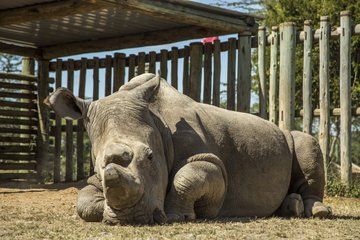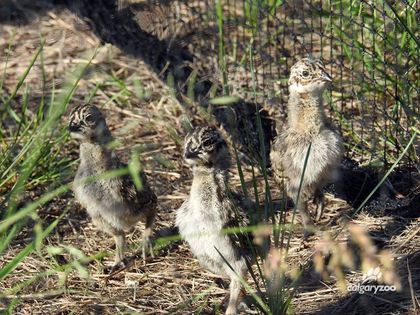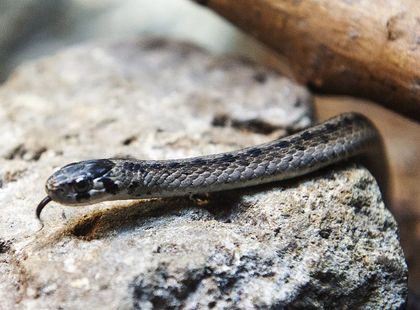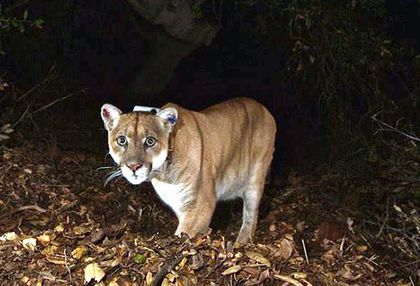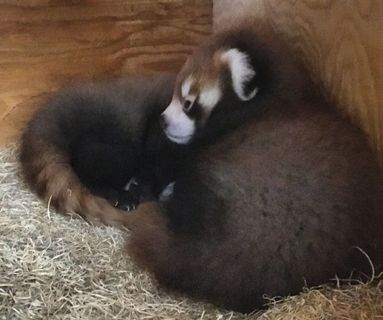911: Animals in Peril
In our solar system, Earth - a grain of dust in the starry vastness of space - is now the only planet where life as we know it can grow and develop. For Earth to maintain this privilege, however, plant and animal species were obliged to confront a host of threats. In the past, they experienced destructive meteorites, gigantic volcanic eruptions and extreme temperature changes. Despite it all, life triumphed. But today, species face a much more insidious problem: a silent menace without the crash of meteorites or the radical character of an Ice Age, one that is causing them to vanish at a dangerously alarming rate...
In the beginning
Earth was formed about 4.5 billion years ago. It took close to 3 billion years before its biodiversity exploded into rich and varied forms of life. Undeniably, the best known are the dinosaurs, who reigned over the planet for 150 million years. Confronted with major natural cataclysms to which they could not adapt, these giants became extinct 65 million years ago. In so doing, they made way for new groups of animals - birds and mammals among them - who were better prepared for the new conditions of life created. But although the extinction of the dinosaurs was a spectacular occurrence, it is estimated that the Earth experienced 4 others preceding it. In each episode, 50 to 90% of living species were wiped off the map, leaving a new generation of species to develop and occupy space that was henceforth free.
Then man appeared...
But lo and behold...although Earth no longer feared annihilation, a new and still more alarming threat came into existence a few hundred thousand years ago - MAN! This dominant species increases at an alarming rate: the world population in 2009 is estimated at 6.8 billion inhabitants including 4 billion in Asia alone. The annual world growth is approximately 1.14%, or close to 4 births per second. So many mouths to feed will inexorably place enormous pressure on resources. For example, 7.5 hectares of land and water per person are needed to support our lifestyles in Canada, whereas the world average is about 2.2 hectares. If the world continues to consume resources at this rate, the equivalent of two planets Earth will be needed to satisfy needs by the end of this century!
Impacts on wildlife
Since all living species are tightly interlinked, human actions inevitably impact the fate of animal species. And there is nothing reassuring about the world picture: of the 44,838 animal species inventoried by the International Union for the Conservation of Nature (IUCN) in 2008, 16,928 - or one out of three - were in danger of extinction! More than 1,800,000 species have been identified to date, but it is estimated that 5 to 20 million species are still unknown and remain to be discovered. At the rate things are going, many of them run the risk of vanishing without ever having been named. Whereas during the time of the dinosaurs, the rate of disappearance was one species every 1000 years, we believe it is now one every 20 minutes! It has even been suggested that half of all living species could disappear in a 100 years. Large meat-eating mammals such as the tiger or Polar Bear may be impressive for their power and strength, but they're certainly no match for THE greatest predator on the planet - Man!
The situation in Canada
In the eyes of the world, Canada is, essentially, a vast wilderness. The country's rich, majestic landscapes, however, do not serve as a protective shield: Canada is young, but the thirst for resources is great! Since the arrival of the first European settlers 500 years ago, 13 species present in Canada have vanished from the face of the earth, and 23 others no longer roam our territory. The Committee on the Status of Endangered Wildlife in Canada (COSEWIC) currently estimates that close to 585 of this country's species are threatened for various reasons. Those that have become extinct include the Dawson Caribou, the Sea Mink, the Labrador Duck, the Great Auk, the Passenger Pigeon and the Blue Walleye. The status of numerous others is cause for alarm, and they are closely monitored by COSEWIC. Among these are the Black-tailed Prairie Dog, Nuttall's Cottontail, the Polar Bear, the Atlantic Walrus, the Harlequin Duck, the Spring Salamander and the American Eel.
| Class | Extinct (world) | Extinct (country) | Endangered | Threatened | Of special concern | Total |
|---|---|---|---|---|---|---|
| Mammals | 2 | 3 | 21 | 16 | 27 | 69 |
| Birds | 3 | 2 | 28 | 19 | 24 | 76 |
| Reptiles | 0 | 4 | 14 | 13 | 9 | 40 |
| Amphibians | 0 | 1 | 7 | 6 | 7 | 21 |
| Fishes | 6 | 4 | 38 | 27 | 40 | 115 |
| Arthropods | 0 | 3 | 18 | 6 | 5 | 32 |
| Molluscs | 1 | 2 | 18 | 2 | 5 | 28 |
| Vascular plants | 0 | 3 | 91 | 51 | 34 | 179 |
| Mosses | 1 | 1 | 7 | 3 | 4 | 16 |
| Lichens | 0 | 0 | 2 | 2 | 5 | 9 |
| Totals | 13 | 23 | 244 | 145 | 160 | 585 |
A wake-up call is needed
The facts speak for themselves: changes wrought by human activities profoundly disrupt the fragile balance among living species and hasten the disappearance of the most vulnerable. Unlike natural catastrophes and their spontaneous effects, these disruptions must be understood, rather, as a destructive downward spiral which, in the absence of rapid and drastic intervention, may lead to severe long-term consequences for our planet. Many scientists affirm that we have entered the 6th era of massive extinction. Will Man be among the species that will be able to adapt and survive?

